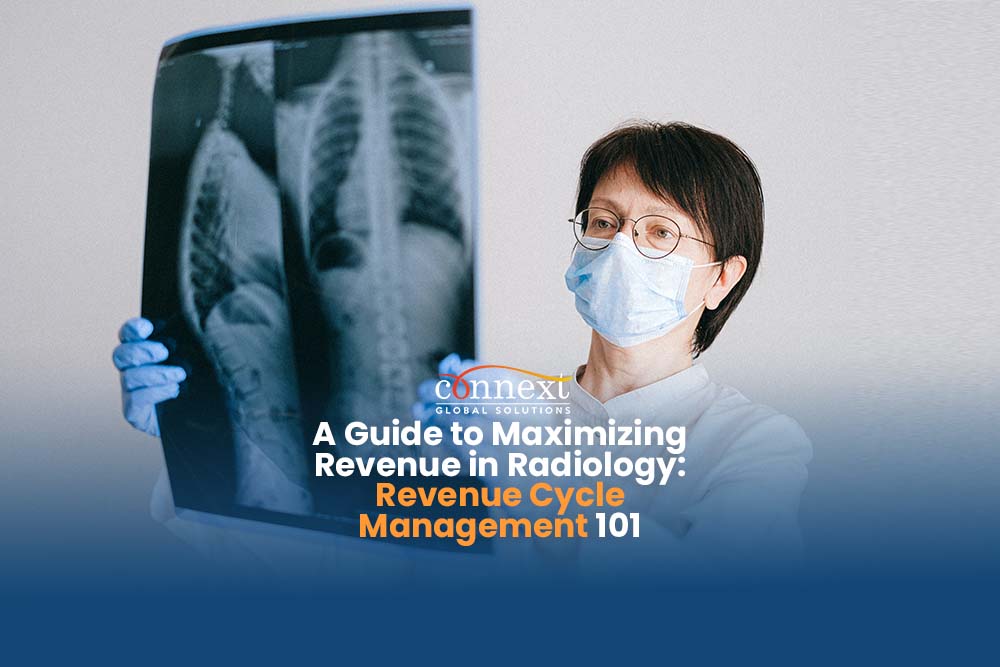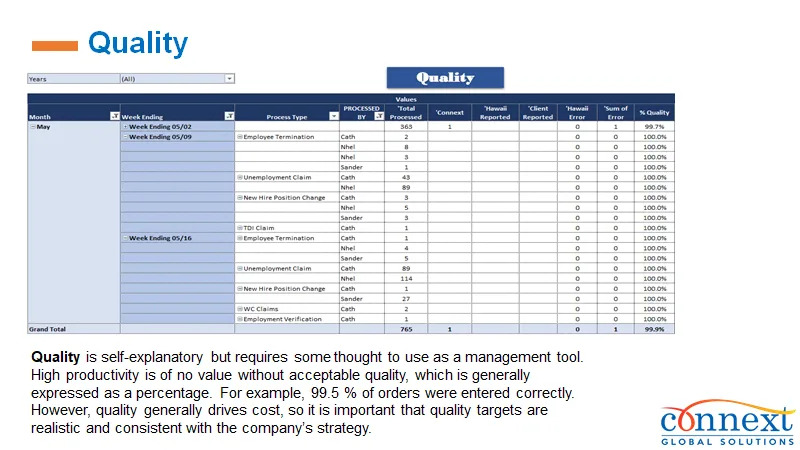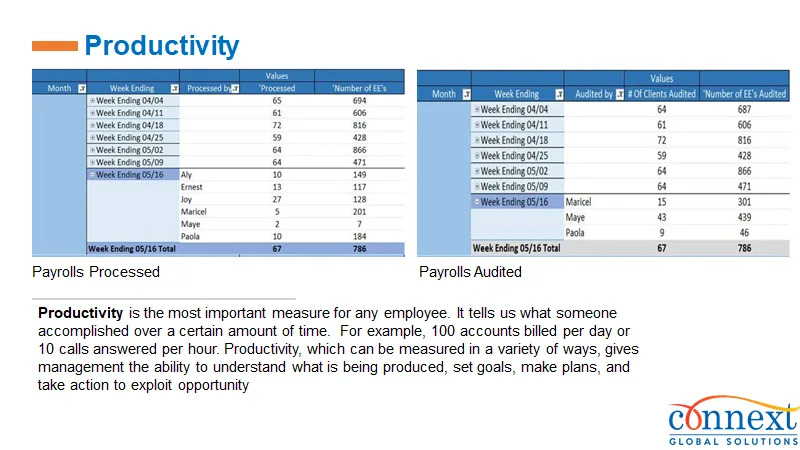Key Takeaways:
End-to-End RCM Understanding – Revenue Cycle Management spans from patient registration to claim submission, denial handling, and payment posting—each step is essential to secure timely reimbursements.
Accurate Coding & Documentation – Radiology demands precise CPT/ICD coding and thorough documentation; mistakes here are primary causes of denials and lost revenue .
Leverage Automation & Technology – Implement EHRs, practice management systems, and real-time billing tools with built-in edits to catch errors before submission and streamline workflows.
Monitor KPIs for Performance – Track critical metrics like days in accounts receivable, denial rates, and collection rates to identify revenue leaks and optimize processes.
RCM Outsourcing Can Boost Efficiency – Partnering with specialized RCM vendors brings expert coding, streamlined denial management, and cost-effective processes that improve cash flow and compliance
Radiology practices operate in a healthcare landscape that is both increasingly complex and highly competitive. With declining reimbursement rates and growing regulatory demands, maintaining financial stability requires more than clinical expertise—it demands a strong grasp of revenue cycle management (RCM). Yet, navigating the intricacies of RCM can be challenging. From accurate coding and billing to timely reimbursements and strict compliance, every step of the cycle plays a critical role in a radiology practice’s overall financial health
That’s why we’ve created this guide to shed light on the intricacies of revenue cycle management and provide you with practical strategies to optimize your practice’s revenue.
Whether you’re a radiologist, practice manager, or billing specialist, this guide will equip you with the knowledge and tools you need to increase your practice’s financial efficiency and effectiveness. From tips on accurate coding to insights into payer contracts, our expert advice and industry best practices will help you navigate the revenue cycle management maze and achieve maximum revenue potential.
Don’t let the complexities of revenue cycle management hold your radiology practice back. Let our guide be your roadmap to financial success.
What is revenue cycle in healthcare?
The revenue cycle in healthcare is the process of tracking revenue from patients from their initial appointment or encounter with the healthcare system to their payment of the balance. It includes all the administrative and clinical functions that contribute to the capture, management, and collection of patient service revenue.
In radiology, this refers to the process of generating and collecting revenue for the services provided by a radiology practice. It starts with the patient scheduling an appointment and ends with the practice receiving payment for the services rendered. Understanding each stage of the revenue cycle is crucial for maximizing revenue.
The first stage is patient registration, where accurate and complete demographic and insurance information is gathered. This ensures that the practice can properly bill and collect payment from the patient’s insurance provider.
Next comes the charge capture stage, where the services provided are accurately documented and coded. Proper coding is essential for accurate reimbursement and avoiding claim denials. Once the services are coded, the claims are submitted to the insurance company for reimbursement. This is followed by the claims adjudication stage, where the insurance company reviews the claims and determines the amount of reimbursement.
Finally, the last stage is payment posting, where the practice receives payment from the insurance company or the patient and reconciles it with the claims submitted.
Common challenges in revenue cycle management for radiology practices
Managing the revenue cycle in a radiology practice can be challenging due to various factors. One common challenge is the complexity of coding and billing for radiology services. Radiology procedures often require specific codes to represent the services provided accurately, and any errors or omissions in coding can lead to claim denials or underpayment. Additionally, staying up to date with the ever-changing coding guidelines and regulations can be overwhelming for practice staff.
Another challenge is the timely and accurate submission of claims. Delays or errors in claims submission can result in delayed or reduced reimbursement. It is important for radiology practices to have efficient processes in place to ensure claims are submitted in a timely manner and are error-free.
Furthermore, managing denials and appeals can be a time-consuming and resource-intensive task. Denials can occur for various reasons, such as coding errors, lack of medical necessity documentation, or non-covered services. Radiology practices need to have effective denial management processes in place to identify and resolve denials promptly. Appeals may be necessary for denied claims that are valid, and the process can be complex and require extensive documentation.
Best practices for optimizing revenue cycle management in radiology
To optimize revenue cycle management in a radiology practice, several best practices can be implemented.
Firstly, accurate and thorough documentation is essential. Radiologists must provide detailed and specific documentation of the services rendered, including the indication for the study, the findings, and the medical necessity. This documentation not only supports proper coding but also helps in justifying the services to insurance companies in case of denials or audits.
Secondly, it is crucial to have a robust coding and billing system in place. The system should be able to handle the complexity of radiology coding and ensure accurate code assignment. Regular audits should be conducted to identify coding errors and provide feedback and training to staff. Additionally, the system should have built-in edits and alerts to catch any potential coding mistakes before claims are submitted.
Thirdly, leveraging technology can significantly streamline revenue cycle management in radiology. Electronic health record (EHR) systems and practice management software can automate various tasks, such as scheduling, coding, claims submission, and payment posting. These technologies can improve efficiency, reduce errors, and provide real-time visibility into the revenue cycle.
Implementing an effective billing and coding system in radiology
Implementing an effective billing and coding system is crucial for optimizing revenue cycle management in radiology. The system should be designed to handle the specific needs of radiology coding, such as capturing all relevant information, generating accurate codes, and ensuring compliance with coding guidelines.
One key aspect of an effective system is the use of standardized coding terminology. Radiology practices should adopt standardized coding systems, such as the Current Procedural Terminology (CPT) and the International Classification of Diseases (ICD) code sets, to ensure consistency and accuracy in coding. These coding systems are regularly updated, and it is essential to stay up to date with the changes to avoid coding errors.
Furthermore, the system should have built-in checks and balances to catch any potential coding mistakes before claims are submitted. This can include pre-claim scrubbing, which automatically reviews claims for errors or missing information, and provides feedback to the billing staff for correction. Additionally, the system should have comprehensive code libraries and coding guidelines readily accessible to assist in accurate code assignment.
It is also important to provide ongoing training and education to staff involved in the billing and coding process. Regular training sessions, workshops, and webinars can help keep staff updated on the latest coding guidelines and best practices. This helps ensure that everyone involved in the revenue cycle management process is knowledgeable and competent in their roles.
Utilizing technology to streamline revenue cycle management in radiology
Technology plays a significant role in streamlining revenue cycle management in radiology. Electronic health record (EHR) systems and practice management software can automate various tasks, improve efficiency, and reduce errors.
One key benefit of technology is the ability to automate the claims submission process. Claims can be generated and submitted electronically, eliminating the need for manual data entry and reducing the risk of errors. Electronic claims also have faster processing times, leading to quicker reimbursement.
Another advantage of technology is the ability to track and monitor the revenue cycle in real time. Practice management software can provide insights into the status of claims, denials, and reimbursement trends. This allows practice managers to identify bottlenecks, monitor performance, and make informed decisions to improve revenue cycle efficiency.
Additionally, technology can assist in patient eligibility verification and estimation of patient responsibility. Integrated eligibility verification tools can quickly check a patient’s insurance coverage and provide information on deductibles, co-pays, and other out-of-pocket costs. This helps in the upfront collection of patient payments and reduces the risk of bad debt.
Key performance indicators for monitoring revenue cycle management in radiology
Monitoring key performance indicators (KPIs) is crucial for assessing the effectiveness of revenue cycle management in radiology practices. KPIs provide insights into the financial health of the practice and help identify areas for improvement.
One important KPI is the average days in accounts receivable (AR). This measures the average number of days it takes for the practice to receive payment for services rendered. Higher average days in AR indicate delayed reimbursement and potential cash flow issues. Monitoring this KPI helps identify issues in the revenue cycle and allows for timely intervention.
Another KPI to monitor is the denial rate. The denial rate measures the percentage of claims that are denied by insurance companies. A high denial rate indicates potential issues with coding, documentation, or billing processes. Monitoring this KPI helps identify trends and areas for improvement in the revenue cycle.
Furthermore, the collection rate is an essential KPI to monitor. The collection rate measures the percentage of billed charges that are collected. This KPI provides insights into the effectiveness of the practice’s billing and collection processes. A low collection rate may indicate issues with claims submission, denial management, or patient collections.
Outsourcing revenue cycle management for radiology practices
Outsourcing revenue cycle management can be a viable option for radiology practices looking to optimize their revenue cycle. Outsourcing allows practices to leverage the expertise and resources of specialized revenue cycle management companies, freeing up internal resources to focus on patient care.
One key benefit of outsourcing is access to industry expertise. Revenue cycle management companies specialize in navigating the complexities of billing, coding, and reimbursement. They stay up to date with the latest coding guidelines and regulations, ensuring accurate and compliant claims submission.
Additionally, outsourcing can improve efficiency and reduce costs. Revenue cycle management companies have streamlined processes and advanced technologies that can automate various tasks, such as claims submission, denial management, and payment posting. This can lead to faster reimbursement and reduced administrative costs for the practice.
However, before outsourcing, it is important to thoroughly research and vet potential revenue cycle management providers. It is crucial to ensure that the provider has a proven track record, strong references, and appropriate certifications and credentials.
Conclusion
Maximizing revenue in radiology requires navigating the complexities of revenue cycle management.
By understanding the revenue cycle, addressing common challenges, implementing best practices, leveraging technology, monitoring key performance indicators, considering outsourcing, and providing training and education, radiology practices can optimize their revenue potential. The revenue cycle management maze can be daunting, but with the right strategies and tools, radiology practices can achieve financial success and sustainability.
Don’t let the complexities of revenue cycle management hold your radiology practice back. Let our guide be your roadmap to financial success.
Connext Global Solutions provides Healthcare Outsourcing for healthcare organizations. Outsource Healthcare services to Connext today
Connext Global Solutions helps companies build custom, dedicated support teams in the Philippines. Learn more about Connext Global Solutions.
FAQ: Radiology Revenue Cycle Management (RCM)
RCM in radiology refers to the financial process of managing administrative and clinical functions tied to patient service revenue. It involves scheduling, pre-authorizations, coding, billing, claims submission, denial management, and collections—all tailored to radiology services.
Radiology RCM ensures timely and accurate reimbursement from insurers and patients. It helps reduce claim denials, improve cash flow, and ensure regulatory compliance—all of which are critical for the financial health of imaging centers and radiology departments.
Accurate medical coding translates radiology procedures into standardized CPT and ICD-10 codes, which are essential for proper billing and reimbursement. Errors in coding can lead to denials, compliance risks, and lost revenue.
RCM technology—such as AI-driven billing platforms, integrated EMR/PACS systems, and automated claims scrubbing—enhances accuracy, reduces turnaround times, and minimizes human error in the revenue cycle.
Yes. Efficient RCM processes result in faster billing, clearer patient statements, easier payment options, and fewer administrative headaches—all of which contribute to a better patient experience.









